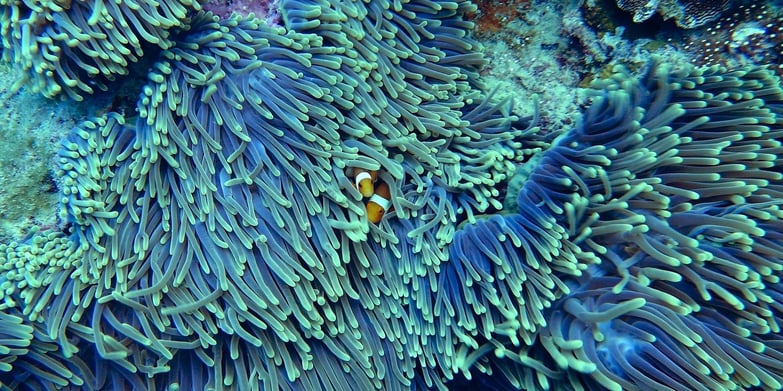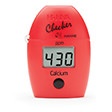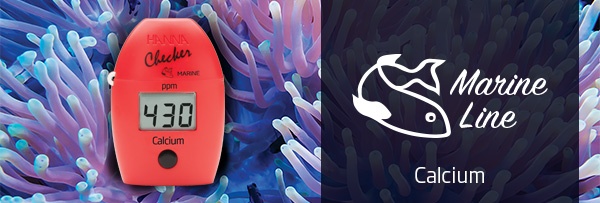
To keep your saltwater reef aquarium healthy, you want to maintain optimal calcium levels to ensure the health of your fish and corals. An optimal calcium range (350-450 ppm) is vital for coral calcification and skeletal formation. Calcium should be checked weekly at minimum, and every time you add or remove any organisms from your tank. The easy-to-use Hanna Marine Calcium Checker HC - HI758 generates accurate, digital readouts in parts-per-million (ppm) versus trying to judge traditional calcium test kit color changes.
In addition to being easy and accurate, the full line of Hanna Marine Checkers eliminates the hassle of always having to buy new test kits. When you run low on the supplied HI758-26 reagent (25 tests per bottle), just purchase a refill pack and you are back to testing in no time.
*Important Note: The Calcium Checker requires freshwater lacking calcium for proper analysis. The use of distilled water (purified with steam distillation) from your local pharmacy or ultra-pure deionized water is required. It’s important to note that water from many hobby-grade reverse osmosis deionization resins may not be suitable for this test. Depending on the filter effectiveness, frequency of resin replacement, or water storage method used, calcium may still be present in home RODI water which could result in false high results when used during C1 stage in the Calcium Checker.
Also, never wash any Checker cuvettes with tap water; this is especially important for the HI758 Calcium Checker. The HI758 uses a 100 to 1 dilution to analyze calcium, and since the sample size is only 100uL (0.1ml), residual amounts of calcium from tap water can affect your results.
How to Test for Calcium (ppm) in Your Aquarium
Video: How to Use the Marine Calcium Checker (4 minutes 45 seconds)
Everything You Need to Start Testing
Our marine calcium checker is supplied as a complete test kit and retails for $49. The kit includes:
- Hanna Marine Calcium Checker HC - HI758
- Two sample cuvettes with caps
- Reagents for 25 tests
- Plastic dropper
- One 1mL syringe with tips
- One 0.1mL mechanical pipette with tips
- One AAA Battery
- Water resistant case to store all testing items
- The HI758 instruction manual with reference guide. The reference guide includes the testing instructions and tips for accurate measurement. It’s the perfect companion to have while you are performing measurements.
How to test:
The Hanna Marine Calcium Checker is designed to make testing quick and easy.
- Press the button to power the meter on. When Add C1 appears on the screen, you are ready to begin testing.
- the 1mL syringe, add 1mL of reagent A to the clean cuvette. Then, using the dropper, fill the cuvette to the 10mL mark with deionized water. (Distilled water is also acceptable.) Once the reagent and water are added, invert the cuvette five times to mix.
- Using a microfiber cloth, wipe the cuvette to remove any oils or fingerprints from the glass. Then place the cuvette into the checker and close the lid, making sure it is completely closed. It is important to make sure that the lid is completely closed for an accurate reading.
- Press the button. Once the screen reads Add C2, remove the cuvette from the meter.
- Add 0.1mL of sample. For best accuracy, use the supplied 0.1mL pipette.
- Once the sample is added, add one packet of reagent B to the sample, then cap the cuvette and shake vigorously for 15 seconds. Wait 15 additional seconds for the bubbles to dissipate.
- Wipe the cuvette of any oils and fingerprints and place back into the meter.
- Press the button; the meter will display the concentration of calcium in ppm.
Hanna Tip: To use the Hanna Instruments Micropipette, first attach the pipette tip. Push the button to the first stop, and then immerse the tip into the sample. Slowly release the button to its original position. Then, wait two seconds to catch any drops before dispensing the sample into the cuvette to the second stop.
Why Test Calcium?
Calcium is an essential ingredient of a healthy and functional reef aquarium. Corals, coraline algae, and other marine organisms require calcium for calcification and growth – so much so that an aquarium stocked with these organisms requires regular calcium supplements in order to maintain healthy levels. A variety of commercially available supplements exist, from calcium salts to buffered calcium supplements, which raise calcium and/or alkalinity.
Many aquarists set up a regular supplementation schedule, either manually or with automated dosing pumps, to maintain proper calcium levels. However, regular calcium monitoring is crucial to a healthy reef aquarium, even if such a system is in place. This is because as corals and coraline algae grow and mature, their requirements for calcium tend to increase. As a result, the growth of the aquarium might outpace the calcium supplementation regimen. Alternately, when a coral colony is fragged or pieces are removed, the amount of calcium that reef tank requires could decrease.
The ocean contains roughly 420 parts per million (ppm) of calcium. For reef tanks, the volume of water is so much less that the calcium concentration has to be measured and maintained on a regular basis. The ideal range for calcium in a healthy reef aquarium is between 380-450ppm. Values below 380ppm may slow the growth of corals, whereas high levels of calcium (>500ppm) puts the tank at risk for a decrease in alkalinity, which could impact the overall health and pH of the aquarium.
The Limits of Traditional Color-Change Test Kits
Many test kits on the market rely on a color change that needs to be judged by eye. These are notoriously inaccurate and difficult to use, especially in the lower ranges. The Hanna Marine Calcium Checker HC - HI758 bridges the gap between simple chemical test kits and professional instrumentation. The one-button design makes testing for calcium a cinch to use.
Learn More About Our Full Marine Line of Checkers
- Hanna Marine Alkalinity (dKH) Checker HC - HI772 and Alkalinity (ppm) Checker HC - HI755 | Alkalinity Reagents HI755-26
- Hanna Marine Ultra Low (ULR) Nitrite Checker HC - HI764 | Nitrite ULR Reagents HI764-25
- Hanna Marine Phosphorus ULR Checker HC - HI736 | Phosphorus ULR Reagents HI736-25


